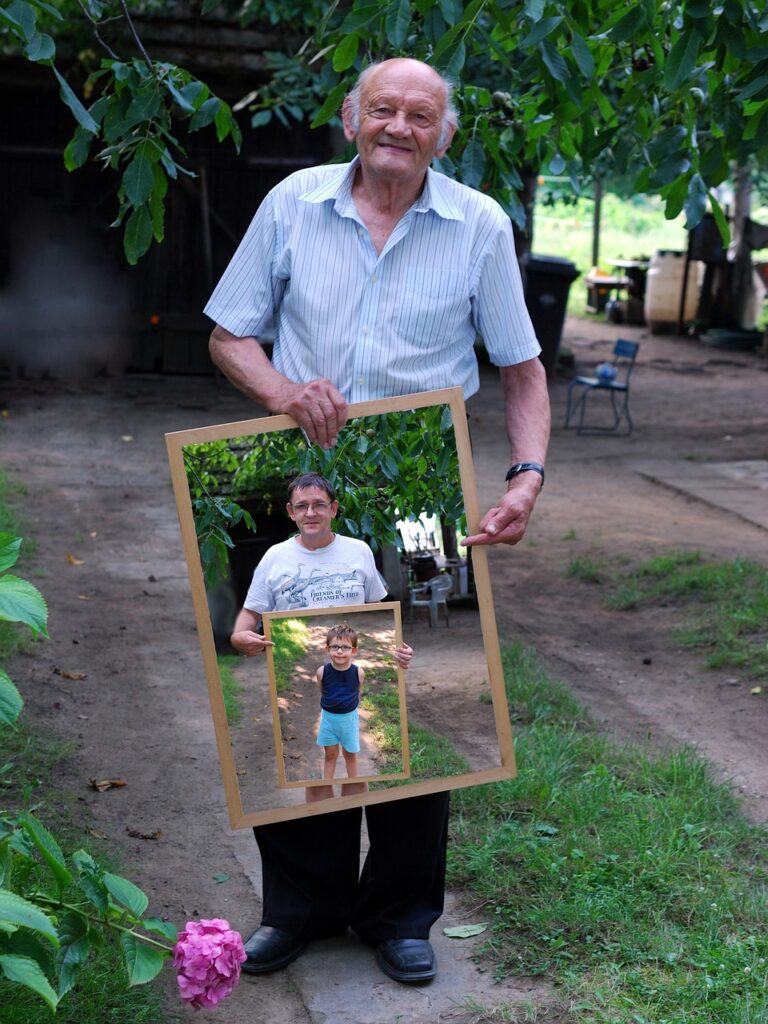Understanding Procedural Generation in Game Development
Hey there, fellow gamers and developers! In our latest article, “Understanding Procedural Generation in Game Development,” we dive into the fascinating world of procedural generation and its transformative impact on game design. We explore how this method uses algorithms to create expansive, dynamic, and often unpredictable game environments—making each playthrough a unique adventure. Join us as we unravel the magic behind this innovative technique and its role in shaping some of our most beloved virtual worlds! Have you ever wondered how vast and diverse game worlds, landscapes, and challenges come into being, seemingly without limit? One of the core techniques behind such dynamic, rich experiences lies in procedural generation. In game development, procedural generation is a revolutionary method that allows creators to craft infinite content with unique features each time it’s experienced, making each playthrough feel fresh and unpredictable.

What is Procedural Generation?
Procedural Generation (PG) refers to an algorithmic process that automatically creates data. Unlike manually generated content, procedural generation uses algorithms, rules, and mathematical formulas to produce game elements. The concept isn’t novel; it’s been around for decades, but its application and sophistication have seen exponential growth thanks to advancements in technology and computing power.
Historical Background
Procedural generation isn’t a new concept. Early examples can be traced back to the 1980s with games like “Rogue” and “Elite”. These early implementations allowed games to run on limited hardware by generating expansive worlds within minimal memory footprints.
Basic Components of Procedural Generation
At its core, procedural generation relies on three primary components:
- Seed: A value that initiates the procedural algorithm. Given the same seed, a procedural system will produce the same output every time.
- Algorithm: A set of rules and mathematical formulas that dictate how content is generated.
- Rules: Constraints and guidelines the algorithm follows to ensure the generated content makes sense.
Types of Procedural Generation
Procedural generation isn’t a one-size-fits-all method. Different types cater to various game development needs:
- World Generation: Creating maps, terrains, and entire worlds.
- Content Generation: Designing quests, items, characters, and dialogues.
- Level Generation: Constructing levels, dungeons, and architecture.
- Environmental Generation: Producing weather patterns, ecosystems, and environmental layers.
Why Use Procedural Generation?
We might ask ourselves why developers favor procedural generation over hand-crafted content. The reality is, procedural generation brings several significant advantages to the table.
Infinite Replayability
One of the most appealing aspects of procedural generation is its capacity to provide never-ending replayability. Every time we start a new game or venture into a new area, the experience is slightly (or entirely) different. This unpredictability hooks players and ensures they continually return for unique experiences.
Efficiency in Development
Procedural generation streamlines the content creation process. Crafting expansive worlds manually is exceptionally laborious and time-intensive. Procedural methods significantly cut down on development time and resources, allowing smaller teams to create large, complex games.
Reduction in File Size
By relying on algorithms to generate content dynamically, games can maintain smaller file sizes. Unlike pre-rendered content, which takes up substantial storage, procedurally generated content exists as compact algorithms and seed values, expanding into full-fidelity content only when needed.
Applications in Game Development
Procedural generation isn’t limited to whimsical landscapes or infinite dungeons. Its applications in game development are multifaceted and bring life to numerous elements.
Terrain and World Building
Procedural terrain generation is perhaps one of the first and most visible uses of PG. Many games generate entire worlds, terrains, and landscapes algorithmically.
Examples include:
- Minecraft: Uses noise functions to create its varied and endless terrain.
- No Man’s Sky: Generates entire planets with unique ecosystems, topographies, and species.
Level Design
Instead of having a fixed set of levels, procedural generation can create levels on the fly that fit specific criteria, making them fresh and challenging.
Examples include:
- Spelunky: Randomly generates dungeon levels.
- Hades: Features procedurally generated rooms and challenges.
Enemy and NPC Generation
Adding to replayability and challenge, procedural methods can be used to create diverse enemies and NPC (Non-Player Character) behaviors.
Examples include:
- The Binding of Isaac: Generates different enemy configurations and behaviors.
- Left 4 Dead: Uses the AI Director to procedurally alter enemy placement and intensity.
Item and Quest Generation
Procedurally generated items and quests ensure that players always find something new and rewarding.
Examples include:
- Diablo Series: Randomly generates items, weapons, and loot.
- Borderlands: Creates endless variations of guns with different stats and attributes.
Dynamic Music and Audio
Procedural generation isn’t limited to visual or interactive elements; it can also extend to audio, creating adaptive and evolving soundscapes.
Examples include:
- Spore: Uses procedural methods to generate adaptive music.
- No Man’s Sky: Features a dynamic, procedurally generated soundtrack.
Common Algorithms and Techniques
Procedural generation relies heavily on specific algorithms and techniques. These methods drive the creation of rich, diverse game content.
Perlin Noise
Perlin Noise is an essential algorithm in procedural generation. It creates coherent, natural-appearing textures and structures, making it ideal for terrains and textures.
| Characteristics | Description |
|---|---|
| Coherence | Generates continuous, smooth noise. |
| Appearance | Natural, cloud-like patterns. |
| Use Cases | Terrain, height maps, textures. |
Cellular Automata
Cellular Automata involves a grid of cells that evolve based on specific rules. It’s particularly effective for creating cave systems or organic structures.
| Characteristics | Description |
|---|---|
| Process | Grid with evolving rules. |
| Appearance | Organic, cave-like formations. |
| Use Cases | Cave systems, organic structures. |
L-Systems
L-Systems (Lindenmayer Systems) are a set of rules used to simulate organic growth processes such as plant forms. They are great for generating fractals and natural vegetation.
| Characteristics | Description |
|---|---|
| Based On | Mathematical rules and recursion. |
| Appearance | Fractal, organic growth patterns. |
| Use Cases | Plants, trees, natural growth. |
Voronoi Diagrams
Voronoi Diagrams partition a space into regions based on proximity to a given set of points. These diagrams are perfect for creating natural landforms, city layouts, and territory mappings.
| Characteristics | Description |
|---|---|
| Partitions | Divides space based on points. |
| Appearance | Natural, cellular structures. |
| Use Cases | Territory, city layouts, islands. |
Markov Chains
Markov Chains use probabilistic rules to predict the next state in a sequence. In game development, they are used for procedural text generation, weather patterns, and game dialogues.
| Characteristics | Description |
|---|---|
| Process | Probabilistic state transitions. |
| Appearance | Sequence-based. |
| Use Cases | Text, dialogues, weather patterns. |

Challenges and Considerations
Despite its advantages, procedural generation comes with its own set of challenges and considerations.
Ensuring Quality
Procedurally generated content risks lacking cohesion, generating nonsensical or low-quality outcomes. Developers need to implement rigorous testing protocols and develop robust rules to ensure high-quality and logical outputs.
Balancing Randomness and Design
While randomness makes each game experience unique, it must be balanced with deliberate design. Too much randomness can alienate players due to inconsistent or unfair experiences. Striking a balance between structure and randomness is crucial.
Technical Requirements
Procedural generation demands strong computational power, especially for real-time applications. The algorithms can be complex and resource-intensive, thus requiring optimized code to run efficiently.
Best Practices in Procedural Generation
To harness the full potential of procedural generation, employing best practices is vital.
Start Simple
Begin with simple systems and gradually increase complexity. This approach helps manage debugging and ensures each procedural element adds value to the overall design.
Use Hybrid Approaches
Combining manually crafted content with procedural elements often results in the best outcomes. Hybrid approaches let developers maintain design control while benefiting from the diversity of procedural generation.
Iterate and Test
Constant iteration and testing are fundamental. Procedural systems evolve through trial and error, and continuous testing ensures generation logic meets design expectations.
Set Clear Constraints
Establishing clear constraints and boundaries guides procedural algorithms toward desirable outcomes. Properly defined rules and parameters ensure generated content is cohesive and high-quality.

Future of Procedural Generation
The future of procedural generation in game development promises exciting advancements and new possibilities. As technology evolves, so does the potential to create even more complex, rich, and multi-faceted game experiences.
AI and Machine Learning
Emerging technologies like AI and machine learning will revolutionize procedural generation by providing more intelligent, adaptive, and efficient systems. Machine learning can develop more nuanced algorithms that understand player behavior, adapting content dynamically to enhance engagement.
Real-time Generation
Real-time procedural generation will become more prevalent with the advent of powerful hardware, such as next-gen consoles and advanced GPUs, allowing more sophisticated and responsive game environments.
Collaborative Worlds
Future procedural systems may enable collaborative efforts where AI and human developers work together to craft even larger and more complex worlds. This hybrid approach harnesses human creativity and machine efficiency.
Notable Examples and Case Studies
To better understand the practical implementation and impact of procedural generation, let’s examine some notable examples and case studies.
Minecraft
“Minecraft” is arguably one of the most well-known examples of procedural generation. The game’s infinite worlds, rich with biomes, terrains, and ecosystems, are all generated procedurally. Players can explore boundless environments, ensuring every game session feels new and exciting.
Elite Dangerous
“Elite Dangerous” offers an expansive galaxy, with over 400 billion star systems generated procedurally. The game’s universe is so vast that players can spend lifetimes exploring it without visiting the same place twice, showcasing the immense power of procedural generation.
No Man’s Sky
At launch, “No Man’s Sky” generated immense attention for its procedurally generated universe, which includes diverse planets, ecosystems, and lifeforms. Despite initial controversies, subsequent updates have solidified its place as one of the quintessential uses of procedural generation in game development.
Conclusion
As we delve into the world of game development, it’s clear that procedural generation is a game-changer. Its ability to create vast, dynamic, and unpredictable game worlds offers developers endless possibilities to innovate and engage players. Understanding and mastering this technique opens the door to crafting experiences limited only by our imaginations.
So next time you embark on a journey in an infinite world, remember the intricate algorithms and thoughtful design choices that power your adventure. With procedural generation at our fingertips, the future of game development is boundless and exhilarating.




